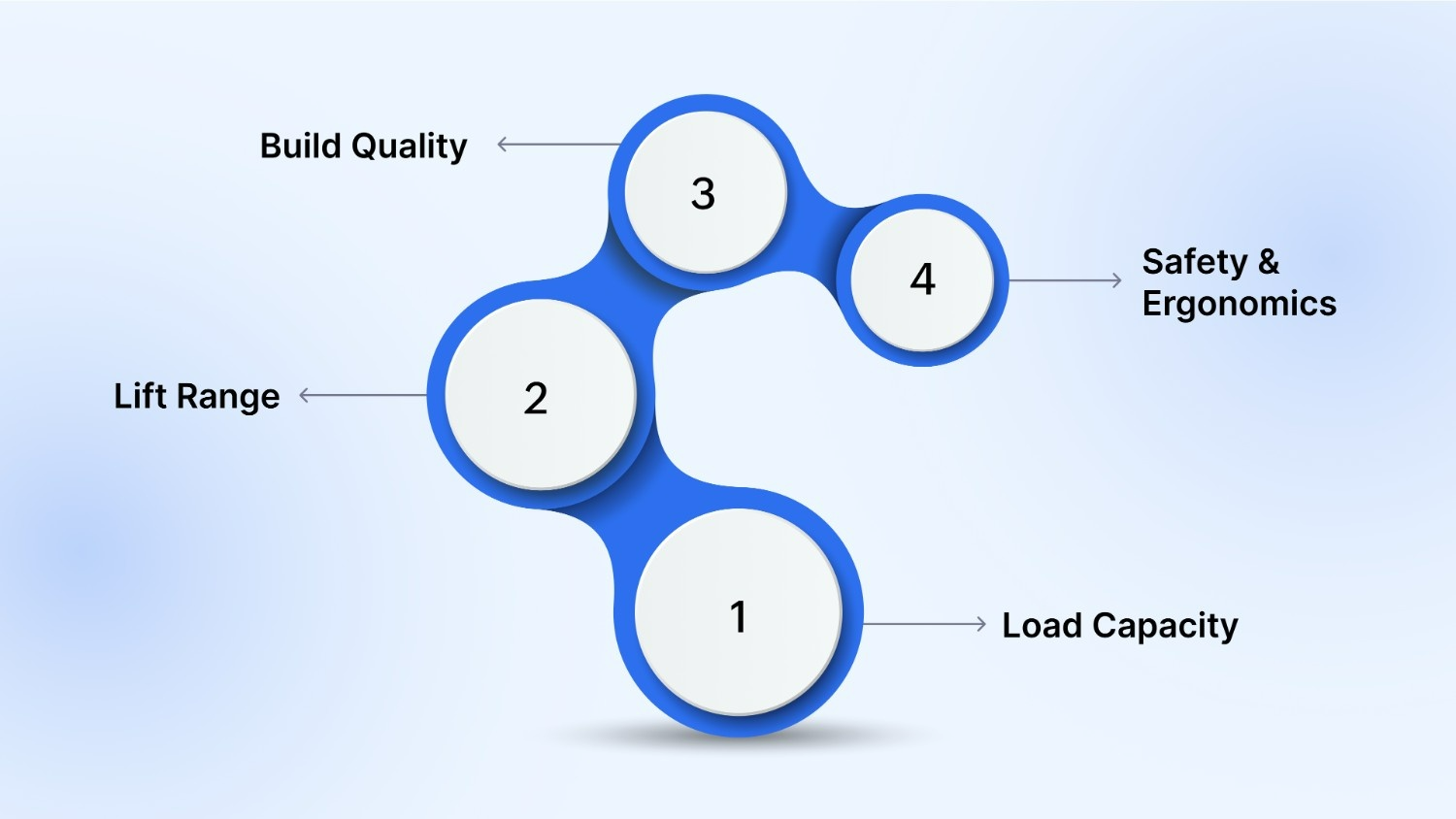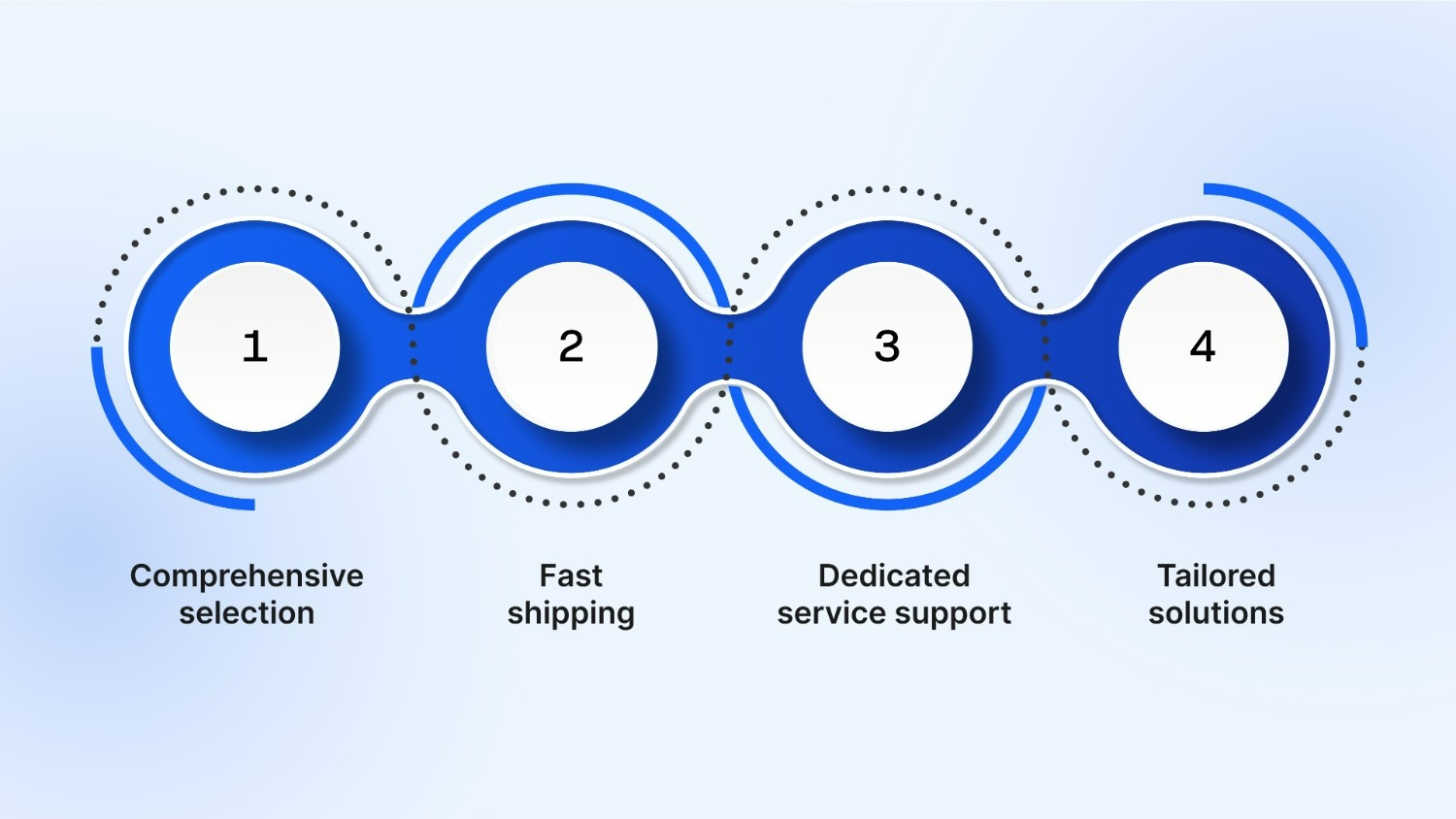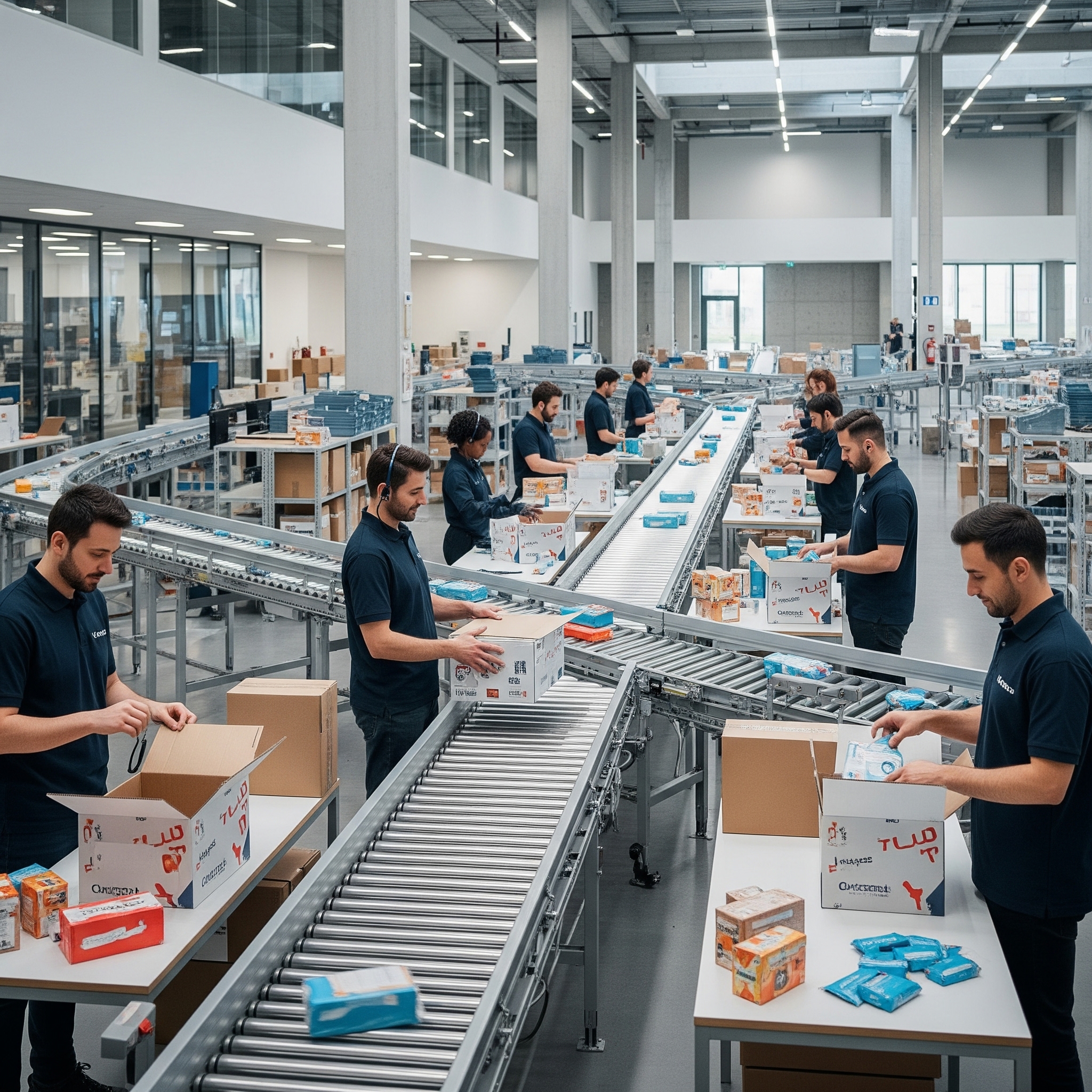Bottlenecks in production often arise not from major equipment breakdowns, but from small inefficiencies, workers bending too low, struggling with awkward loads, or waiting for forklifts to move a pallet across the floor. These repetitive delays can reduce throughput and increase the risk of injuries.
Portable lift tables offer a strategic solution. By combining height adjustment with mobility, they close the gap between heavy-duty equipment and manual handling, giving smaller operations the agility they need without sacrificing safety.
If you’re looking for the best portable lift tables for small operations, this guide shows how to match features, applications, and best practices for long-term results.
Key Takeaways:
- Portable lift tables provide flexibility across multiple workstations, making them ideal for small operations with limited space.
- Load capacity and lift range must align with your heaviest routine tasks to prevent premature wear or inefficiency.
- Power options vary: manual models suit light use, while hydraulic or electric versions support heavier loads and repetitive tasks.
- Ergonomic and safety features such as slip-resistant platforms, locking casters, and overload protection reduce injury risks.
- Investing in portable lift tables improves throughput, reduces downtime, and strengthens ROI in lean production environments.
How Portable Lift Tables Transform Small Operations?
Essentially, portable lift tables are scissor-lift platforms mounted on wheels, designed to raise, lower, and transport materials across workstations.
Unlike stationary units, these mobile tables adapt seamlessly to changing production needs, tight layouts, and dynamic workflows, making them ideal for small operations seeking flexibility and efficiency.
They are widely used in:
- Assembly and repair lines to adjust product height for ergonomic work.
- Warehousing and logistics for loading, staging, and transporting cartons.
- Maintenance shops to hold tools, parts, or heavy components at an ideal height.
If you are considering portable lift tables for small operations, John Maye Company offers tailored recommendations, a wide packaging supplies, and reliable service support.
Our solutions help you align mobility, load capacity, and safety features across assembly, warehouse, and maintenance environments. Get in touch with our team to identify the lift table that best fits your workflow.
By bridging multiple tasks with one piece of equipment, portable lift tables become more than a tool, they serve as a workflow multiplier.
Why Portable Lift Tables Deliver More Flexibility and ROI?
The choice often comes down to flexibility versus capacity. Stationary lift tables can support heavier loads, but they are fixed in place. Portable versions, though lighter, bring unmatched versatility:
- They move where the work happens, reducing wasted steps.
- Their compact footprint fits into tighter layouts without disrupting flow.
- Workers experience better ergonomics, which reduces fatigue and absenteeism.
For smaller operations where space and labor must be maximized, portability becomes a strategic advantage.
For more guidance, check out John Maye’s blog on how high does pallet jack lift.
Types of Portable Lift Tables
Just as no two facilities run alike, portable lift tables come in configurations designed for specific needs.

1. Manual Portable Lift Tables
Operated with foot pedals or hand cranks, these are reliable in low-volume environments. They’re cost-effective and require little maintenance, making them ideal for workshops or light assembly stations.
2. Hydraulic and Electric Lift Tables
Hydraulic tables provide smooth lifting for moderate to heavy loads, while electric versions remove manual effort altogether, offering push-button convenience. These excel in operations with repetitive lifting and frequent repositioning.
3. Specialized Tabletops
To further integrate with workflows, tabletops can be customized:
- Roller conveyors for moving boxes in and out of the workstation.
- Ball transfers for effortless multi-directional handling.
- Turntables for 360° load access during assembly or packing.
These variations transform lift tables from a simple platform into a tailored productivity system.
Also Read: Top Hydraulic Lift Tables vs. Pneumatic Lift Tables: Choosing the Best Option
8 Top-Rated Portable Lift Tables for Maximum Efficiency
Here’s a practical example of a portable lift table commonly used in small operations:
This model balances strength and mobility, making it a reliable fit for packaging stations, repair shops, or warehouse staging areas.
Key Factors to Consider Before Buying Lift Tables
Selecting the best portable lift tables for small operations requires more than comparing prices. The right choice balances features with your workload to deliver lasting value.

Here are the essentials:
- Load Capacity: Choose a table that supports your heaviest routine load. Undersizing shortens service life, while oversizing adds unnecessary cost.
- Lift Range: Align the table’s lowest and highest positions with your workflow needs, from ground-level pallet handling to waist-high assembly.
- Build Quality: Heavy-gauge steel construction and corrosion-resistant finishes extend durability under daily use.
- Safety and Ergonomics: Prioritize features like locking casters, overload protection, and slip-resistant platforms to protect workers.
By weighing these considerations strategically, you avoid costly mismatches and ensure efficient packaging and your lift table supports productivity long term.
Benefits That Impact the Bottom Line
Portable lift tables are not just load-moving tools, they’re workflow enhancers. When integrated effectively, they deliver measurable improvements:
- Throughput gains: Faster positioning of materials reduces idle time across processes.
- Operator flexibility: A single worker can complete tasks that typically require two or more.
- Injury reduction: Ergonomic height adjustment lowers the risk of repetitive strain injuries.
In lean, cost-conscious environments, these benefits translate directly into ROI through labor efficiency, reduced downtime, and improved safety compliance.
Operational Limits and Smart Usage Strategies
While portable lift tables offer significant workflow advantages, they do come with considerations. Their capacity ceilings mean they cannot match stationary units for extremely heavy-duty lifting, and maintenance demands, especially for hydraulic and electric models, require regular attention to keep performance consistent.
The key is to align the table type with the workload. A light-duty manual model may fall short in a warehouse setting, while a high-powered electric unit could be excessive for occasional lifting tasks.
To get lasting performance and ROI, integrate these best practices into daily operations:
- Train operators: Proper instruction on safe loading and movement reduces risks.
- Inspect routinely: Monitor wheels, pumps, and lift arms to address wear before it causes downtime.
- Respect load ratings: Staying within specified limits preserves equipment life and safeguards workers.
For ongoing performance, go through our post on Essential tips for packaging machine maintenance, which offers preventive maintenance programs and operator training, keeping your lift tables safe and productive for years to come.
When challenges are addressed proactively and best practices are followed, portable lift tables function as a core workflow tool rather than just an accessory, delivering long-term efficiency and safety benefits.
Why Partner with John Maye Company?
Choosing the right equipment is only part of the equation. With John Maye Company, you gain:

- Comprehensive selection of portable and stationary lift tables to match any application.
- Fast shipping: Most orders leave within 24 hours, so production keeps moving.
- Dedicated service support: On-site technicians and remote assistance minimize downtime.
- Tailored solutions: Our team aligns equipment recommendations with your workflow strategy to ensure ROI.
From compact manual lifts to high-capacity hydraulic units, John Maye offers solutions that adapt as your business grows.
Conclusion
Portable lift tables are not just convenient; they are essential for small operations aiming for safer, faster, and more flexible material handling. Used correctly, they reduce workplace injuries, streamline workflow, and adapt to changing production demands.
From compact tables for floor-level tasks to heavy-duty models for higher loads or tailored solutions for seasonal spikes, John Maye Company offers portable lift tables, expert guidance, and Midwest service you can rely on.
Request a custom consultation today to explore the best portable lift tables for small operations and keep your production floor operating at peak efficiency.
FAQs
1. Why should I choose a portable lift table over a stationary one?
Portable lift tables provide flexibility to move loads across multiple workstations. They adapt to changing production layouts and allow one operator to handle tasks that might otherwise require multiple people.
2. What load capacities do portable lift tables support?
Capacities vary by model. Light-duty tables handle a few hundred pounds, while heavy-duty and hydraulic-electric models can lift thousands of pounds. Always select a table rated for your heaviest regular load.
3. How do different lift table power types compare?
Manual tables are ideal for occasional use and light loads. Spring or air-powered tables adjust automatically with load changes. Electric lift tables provide faster, consistent lifting for high-volume or repetitive tasks.
4. Can portable lift tables improve workplace safety?
Yes. Adjustable height reduces bending and overreaching, slip-resistant platforms and safety bars prevent accidents, and locking casters keep tables stable during operation.
5. How do I move a portable lift table with heavy loads?
Most tables feature swivel casters for smooth movement. Always lock the brakes when lifting or lowering, center the load, and avoid uneven surfaces to maintain stability.

Blogs

Best Shrink Wrap Machines for Your Business
Discover the best shrink wrapping equipment for food packaging compliance. Conflex offers high automation. Increase efficiency now!

Top Banding Machines for Packaging Solutions
Find top banding machines for small to mid-size packaging lines! Discover flexible automation options and sustainability features. Optimize efficiency today!

Best Pallet Wrapping Machines for Manufacturing Plants 2025
Explore the best pallet wrapping machines for manufacturing plants in 2025. Learn how to choose, compare key models, and reduce wrapping costs.
